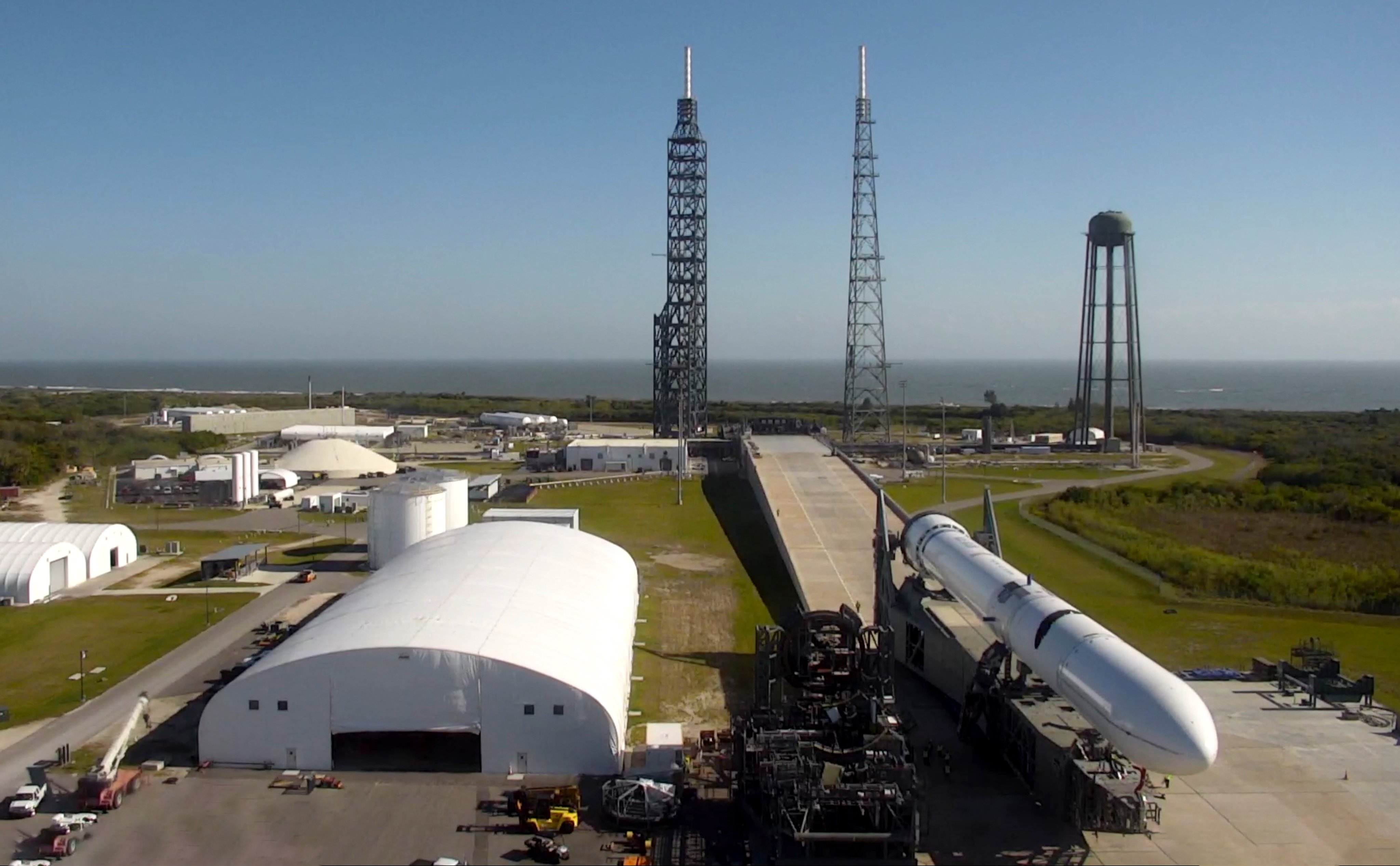Ahead of testing, Blue Origin raises New Glenn on the launch pad for first time
Jeff Bezos’ Blue Origin raised a test version of its massive orbital rocket on its launch pad for the first time Wednesday, inaugurating the start of a major test campaign ahead of the first launch later this year.
The test version of the rocket is all Blue Origin hardware, but not all of it will necessarily end up going to space. The second stage and the payload fairing that sits at the top of the vehicle are both stand-ins during testing; the rocket also doesn’t have any BE-4 engines, as they’re not needed for the upcoming suite of tests. Those engines, which are also made by Blue Origin, are undergoing their own test campaign at NASA’s Marshall Space Flight Center and the company’s facilities in West Texas.
The upcoming tests with this launch vehicle will let teams practice vehicle integration and transportation to and from the launch pad, and what’s called an integrated tanking test. For that test, the booster will be fueled with liquid nitrogen (which is not used during an actual launch) to verify that the fluid systems function properly. Tests are anticipated to take at least a week, Blue Origin CEO David Limp said on LinkedIn.
Once the tests are complete, the vehicle will return to Blue’s massive garage at Florida’s Cape Canaveral Space Force Base, where engineers will outfit the reusable first stage with seven BE-4 engines and mate it with a flight-ready second stage. (The BE-4 engines gained flight heritage earlier this year, when they powered United Launch Alliance’s first Vulcan Centaur rocket launch.)

New Glenn rolling to the launch pad. Image Credits: Blue Origin
Limp expressed confidence that the vehicle will meet its target launch date by the end of this year: “Manufacturing continues to make progress with multiple boosters, fairings, and second stages in our factory,” he said. “We’re looking forward to bringing this heavy-lift capacity to our customers later this year.”
Bringing the new vehicle to market will mark a new chapter for the 24-year-old company. The company is best known for conducting space tourism flights with its suborbital rocket, New Shepard. That vehicle, which is 60 feet tall, only flies to around 66 miles — above what many consider to be the boundary of space, but far short of reaching orbital space.
New Glenn is considerably more powerful. The 320-foot-tall launch vehicle is Blue Origin’s first heavy-lift rocket, designed to launch more than 45 tons of payload to low Earth orbit. The reusable first stage will land on a barge in the Atlantic Ocean, similar to how SpaceX recovers its boosters, and is designed to fly for at least 25 missions.
The vehicle has already been tapped by multiple customers — the first launch will carry a pair of NASA spacecraft called ESCAPADE, which have Mars as their ultimate destination. Amazon, Bezos’ other company, also awarded New Glenn billions for up to 27 launches for its forthcoming Project Kuiper satellite internet constellation. Blue Origin has also scored launches for telecom providers Telecast and Eutelsat for later this decade.

